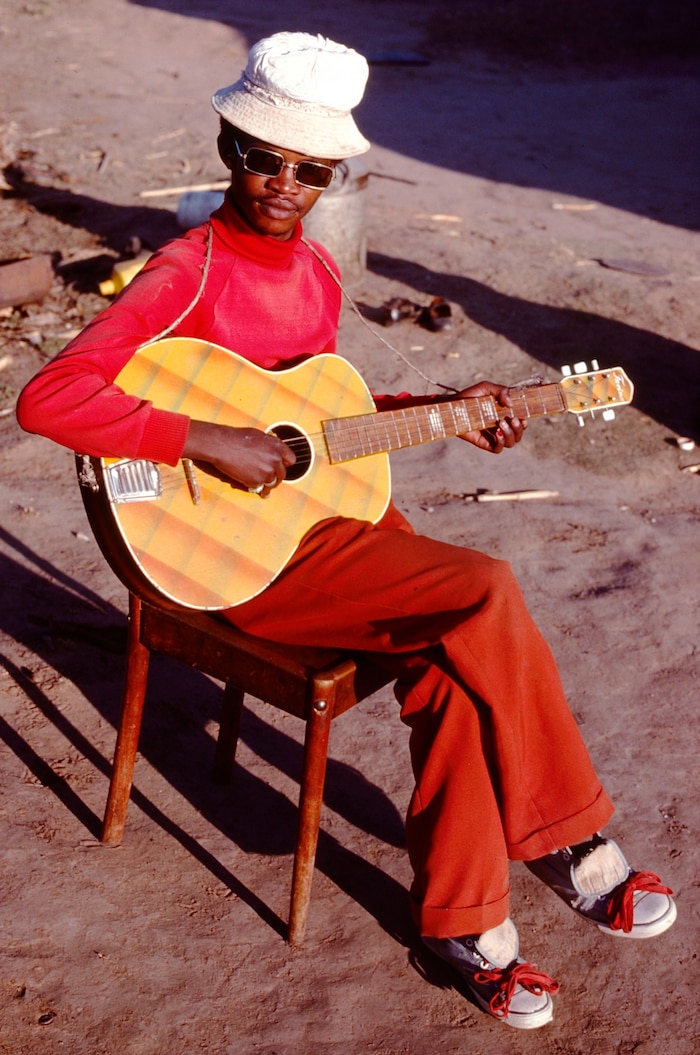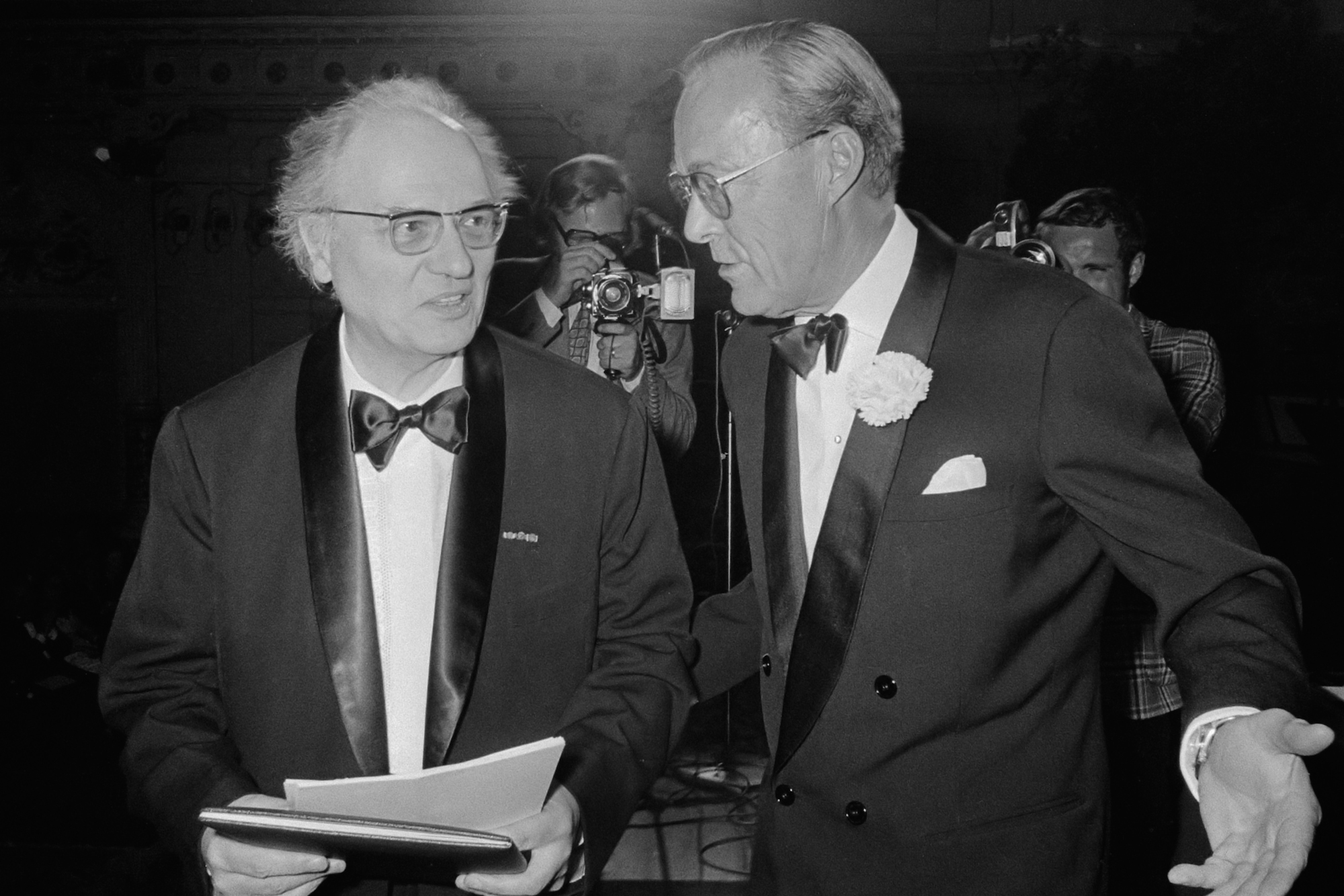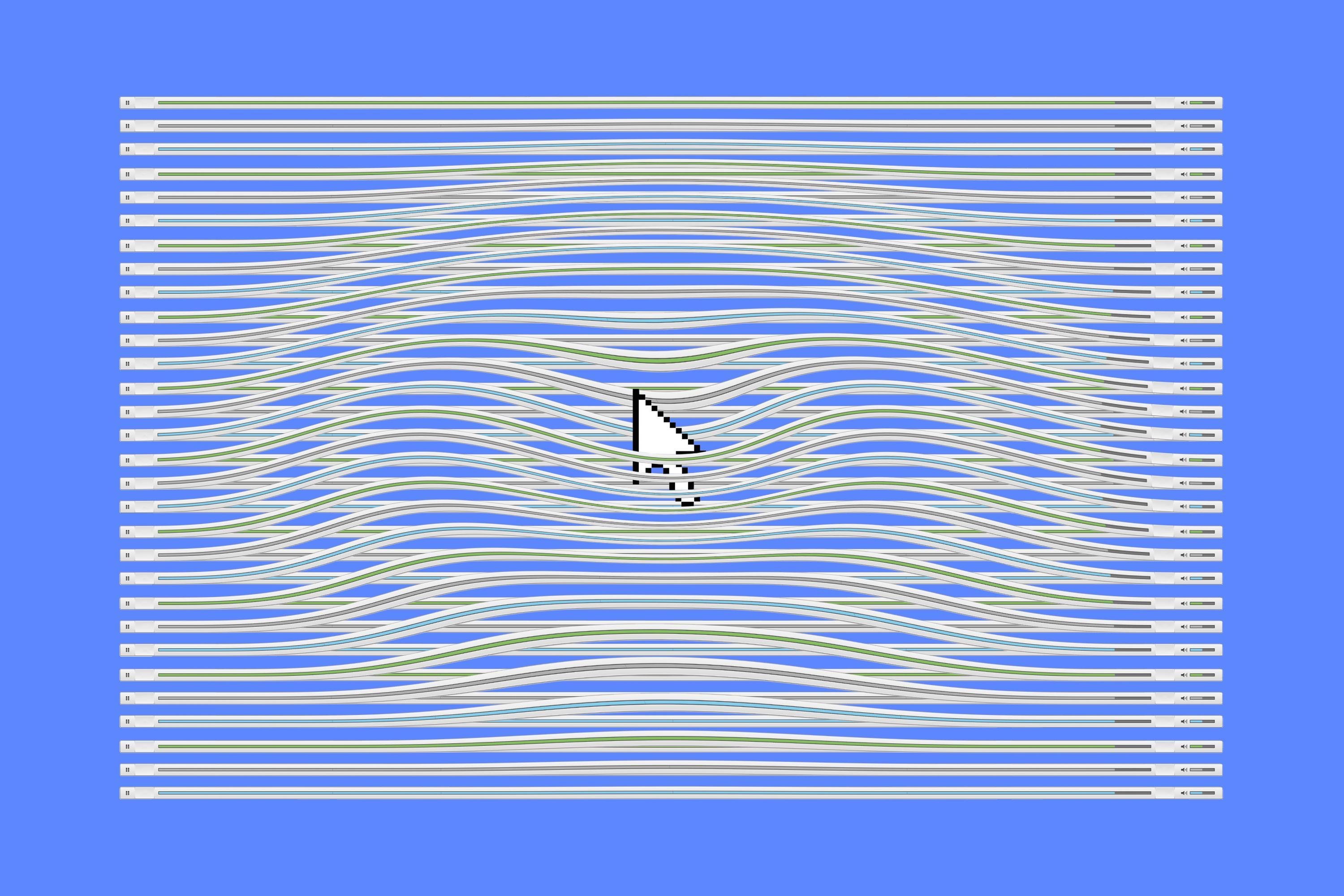Sculpting Sound: The Life of a Field Recordist
Jack Needham speaks to practitioners of the art of field recording about the history of the craft and their distinct creative philosophies
%20-%20Credit%20Steve%20Dunbar%20(1).e92e60ab.jpg?auto=format&w=700)
The act of listening is something field recordists have spent over 100 years exploring, travelling the globe to document excerpts in time and space. Field recording, which was driven in the late 1800s by a fascination with nature, is today an artform that aims to redefine perceptions of the natural world and the human effect on it. Motivated by a need to both archive and understand our environment, field recording as a practice captures the sounds of our natural landscapes and disparate cultures in an attempt to connect ourselves with a wider consciousness.
Field recording can be traced back to the words “Au Clair de la Lune,” or “By the Light of the Moon,” the earliest known recording of a human voice. Using a phonautograph – the world’s first patented recording device – its inventor Édouard-Léon Scott de Martinville recorded twenty seconds of heavily distorted (and undeniably creepy) audio on April 9th, 1860. Building on this breakthrough, in 1889 an eight year old Ludwig Karl Koch – the “Master of Nature’s Music,” as he would become known – used his father’s wax cylinder recorder to capture the first documented form of non-human sound: the song of a Common Shama bird. In doing so Koch accidentally invented the notion of preserving sound as a form of archaeology, creating an object that could be stored for future generations.
Between 1913 and 1930 the inventions of futurist Luigi Russolo explored the sounds of warfare and industry through experimental musical instruments, using sound as a raw material to pioneer the concept of sound art. In the 1940s, Pierre Schaeffer coined the term “musique concrète” to define a musical form where natural sound became a material for sonic exploration, fusing field recordings with post-WWII advancements in technology. Creating scores of music from the natural rhythm of found sounds, Schaeffer became a godfather of sampling, recognising how everyday sounds could be spliced, looped, reversed and morphed into new forms of composition away from written scores. Via Schaeffer and composer, theorist and philosopher John Cage – whose most famous lesson in listening, “4'33",” contested that all forms of sound could be appreciated as music – organic sound became a form of avant-garde expression. Since then, recordists continue to be influenced by the world’s natural rhythms and our human impact on it. For some, the chug of a train is similar to the pulse of a heartbeat, or in the case of works by New Zealand sound artist Stanier Black-Five, an earthquake that shook her home becomes its own instrument.
The contemporary accessibility of wallet-friendly technologies have only made recording the outside world easier. Experimentations in sound used to take place predominantly in laboratories and historical buildings – Schaeffer’s Studio d’Essai radiophonic workshop was formerly the home of a radio station run by the French Resistance during the war – but in modern times this idea of listening as an active art has become more widely appreciated and normalized. Whether it’s the search for higher-fidelity forms of music, a 21st century need to document our daily lives or simply because everyone with an iPhone also holds a half-decent recording device, what was once a niche practice of field recording reserved for those who could afford the equipment has become widely attainable.
“Things have become – generally speaking – more portable. It’s democratised the whole process and that’s great,” says field recordist and composer Chris Watson. Since forming Sheffield’s influential group Cabaret Voltaire, Watson has become one of the world’s leading field recordists and documenter of natural phenomena, working with the BBC and Sir David Attenborough on various wildlife documentaries as well as releasing several narrative albums through Touch. Watson differentiates, though, between field recording, a broader term, and fieldcraft, in which being an invisible presence in your surroundings is considered the key to capturing the most natural recording: “As far as I’m concerned, fieldcraft, not field recording, is the most important and significant artistic contribution to our kind of work.”
It was only until relatively recently that recordists working in sound thought of the practice as a way to convey a form of objectivity. Up until the mid-century, field recordists held a very pure view of recording as an impartial practice which stood as a mirror image of the landscape it was recorded in, undiluted by personal bias or human effect. But similar to how a photographer has artistic intent behind a camera lens, so too do field recordists behind the microphone, making objectivity an unachievable task according to sound designer and composer Douglas Quin. Quin’s travels as a sound designer for TV and film are as far-reaching as the projects he’s been involved in, from documenting the Arctic tundra for Werner Herzog’s Encounters at the End of the World to contributing sounds for Lord Of The Rings and Jurassic Park III. “The idea of the tool as being an objective lens I think was a myth to begin with,” he says.
“The minute you switch on a device – whether it’s a camera or a recorder – your presence alters it,” thinks Quin. “You’ve already created aesthetic decisions and a context for that mediated experience, and I think to feel otherwise limits you. For me, I like to have a broader discourse in my work. With this kind of material there’s an impulse to share it widely and engage with people at all levels, whether it’s lighthearted or a more serious invitation to consider what’s happening around us in terms of climate change and the environment.”
Today, arguably the greatest social and political importance of field recording is its function as a form of conservation. Ethnomusicology, folklore, linguistics, dialects and cultural anthropology are all areas where sound can help navigate research in the field. The recording of wildlife and changing landscapes can greatly affect our understanding of animal behaviours, climate change and noise pollution. One of the best examples of this is in “Carousel feeding killer whales” taken from the Gruenrekorder release Ocean Sounds, a recording that demonstrates the effects of noise pollution on the feeding and social behaviour of killer whales in the Norwegian Archipelagos.
In the field of ethnomusicology, sounds recorded over a century ago continue to bridge cultural and musical traditions, ones which are becoming increasingly lost. As reported in 2015, on a historical average a language dies around every four months, and as the internet continues to reach formerly far-reaching places, traditional forms of music begin to dilute or merge into new genres. One of the jobs of the British Library Sound Archive is to ensure these moments in history aren’t lost in time.
“Our recordings date back to the first British expedition to the Torres Strait Islands right through to recordings made last week in the park,” says Dr. Janet Topp Fargion, Lead Curator of World and Traditional Music at the British Library. Dr. Fargion and her colleague Cheryl Tipp, a Wildlife & Environmental Sounds curator, both help shape one of the world’s most comprehensive collections of recorded sounds. Within their vaults lie shellac discs of traditional Middle Eastern musics, Hungarian soundscapes and some of Hugh Davies’ earliest avant-garde compositions, all making up the tiniest fraction of its expansive six and a half million-item sound catalogue – with over 90,000 recordings available to stream through their online collection.
The British Library’s intentions are not for these sounds to form an audial trophy cabinet: they are to be shared. And while her work lies in conservation, Dr. Fargion’s focus is in keeping these sounds alive for future generations to enjoy and become inspired by. “If there’s a recording made you need to archive it and preserve it for the future,” she says. “I’m looking at people behaviours and how they’re expressed musically. So if people are expressing music in electronic forms in Kenya then we’re interested in that. The philosophy behind doing that is about connecting with people and making things accessible for the future. It’s about keeping performance alive.”
In the past, ethical considerations in recording may have been all but ignored. “Back in the days somebody could go and stick a microphone in anybody’s face and press record,” says Tipp. The practice of taking recordings from a remote community to simply further one’s archive or personal profit, with little or no recognition or revenue given to that community, were commonplace. In a 1973 publication, Hugh Tracey, who throughout the 20th century developed one of the largest archives of recordings from across the African continent, “thanked” the “thousands of Africans [...] who performed for us, most of them without monetary reward of any kind but with genuine satisfaction at being able to hear themselves for the first time through the medium of electrical recording.” Some of Tracey’s work was also funded by several grants from the Mining Industry of Southern Africa. Thankfully, today such an approach is condemned by the likes of the British Library and in the wider field recording community.
But as humans continue to revive formerly untouched areas of land and our natural world continues to change, in that lies the British Library’s continued importance. “We provide recordings to researchers who can play it back into the environment to get a response,” says Tipp. “A few years ago they found a new population of a rare species in Kenya using our recordings, and because of that they were able to apply for protection in the area and stop it succumbing to deforestation. We have to be careful which recordings we release, though. In areas such as the illegal pet trade they can take these recordings and play them in the wild, attract a particular rare species and sell on the black market.”
“In the archive we have recordings of extinct species that you can’t hear in the wild – they’re finished,” Tipp adds. “You can go to a museum and perhaps look at a specimen, but sound creates a very different response and connects you with the very landscape it was recorded in.”
One person who has explored that emotional connection to their landscape is Kevin Volans, whose Southern Africa Music Collection consists of over 500 recordings from across his South African birthplace throughout the late ’70s. After moving to Cologne in 1973 to study under the spatial sound pioneer Karlheinz Stockhausen, Volans spent ten years exploring the shared traits of African composition techniques and pre-Moog electronics. “The sense of timelessness in the African landscape has informed my work a great deal,” he says.
“Growing up in South Africa, everything involved in that has influenced who I am today,” he says. “Through Stockhausen and others like John Cage, electronic music opened my ears to the sound world around me, but in African compositional techniques I discovered a more interesting and fruitful avenue of research. For me, there was no ‘transition’ to electronic music: it was all part of the same musical world.” Just one example of this comes in Volans’ work Studies in Zulu History, a 36 minute electronic recreation of the prehistoric sounds of insects recorded in Pietermaritzburg, South Africa.


Different multisensory methods of spatial recording also continue to be used by field recordists intent on creating new sonic experiences, a way of “putting microphones in places where you wouldn't normally put your ears,” according to Chris Watson. Heavily influenced by Schaeffer and the Groupe de Recherches Musicales (GRM) collective he founded, Watson utilises spatial sound technology to map sounds in headphones or across a room, especially in live settings. A recent performance in Geneva saw Watson shadow a former fallout shelter in complete darkness while an orchestra of hydrophonic recordings mimicked the experience of falling asleep on the seabed. Another project saw Watson “kill the forest in Northumberland,” creating a soundscape of 2000 crows coming home to roost pumped through a 20 channel soundsystem hidden amongst the trees of Kielder Forest. In such work, Watson examines the natural phenomena of sound and the history of its source, crafting a hyperreality that might actually be physically impossible to experience.
“I’m convinced that across the globe all our music has evolved from the sound of the natural world,” says Watson, who has also used gases being released from melting icebergs as a sound source. “Whether it’s mimicking birds or other animals, the sounds we’re excluded from living in have influenced us for a millennia. There’s significant cultural and spiritual attachment to not only the sounds but the places where they came from. Sometimes, folklore has actually informed scientific fact, and that’s one of the things that I’m fascinated by really.”
“I like the idea of taking works into places and reconforming them into a visceral experience,” Watson adds. “Through my installations I get to create a space that you cannot represent in any other way. You can’t put it on a CD or you can’t make it as a digital download. You have to be there.”
If for some field recording is seen as a non-invasive practice in a world that is increasingly defined by anthropomorphic change, then other artists like Mark Peter Wright are creating discussions around that through interactive art and communal listening. Whether exploring the “archetypal, non-invasive nature recordist” through the phenomena of Bigfoot or crafting microphones into parasitic objects of surveillance and intrusion, the lack of self-imposed restraints expands the possibilities of Wright’s work.
“I think of sound as a material and something that you can work with and sculpt,” says Wright, whose early memories of sound design came in the cut-and-paste sampling methods of early ’90s hip-hop, specifically Wu-Tang Clan. This ability to create “weirdness within music” through chopped building blocks of material helped form his experimental approaches to sound and his questioning of field recording as a practice. “I don’t think sound art should be contained to sound as a medium,” he goes on to say. “When you think about listening, which is a multi-sensual process, you can think of sound art as a multimedia activity, too.”
Without a need or desire to obtain crisp recordings of natural sound – “I’m more interested in doing something disruptive than capturing a pristine idea of nature,” he says – Wright’s rejection of shared norms within field recording puts his work in a fine art context. Residing in a more conceptual field also arguably gives him greater opportunity to make certain statements in his work. “The rights of nature is quite an interesting paradoxical world,” he says. “I don’t like to treat the environment as a compositional resource you drain and spit out somewhere else, but in that there’s a weird power imbalance I find interesting to get into. To me that disrupts the act of field recording and I’m into disrupting my own process, in a way.”
.ebea25d6.JPG?auto=format&w=700)
Similarly, even if the finished output is drastically different, Douglas Quin also encourages us to question our environment by making his work as accessible as possible, whether it’s with groups of 10 year olds watching Jurassic Park III or those gaining an insight into the Zen communities of China in the film One Mind. “It’s about reflecting on our relationship to the world around us and somehow look at a way to efface the boundary between us as a species and nature as something other than us,” Quin says. “It’s reflective in that regard – I’m artistically exploring a way of reconnecting that separation.”
Whether via the disruption of our environmental status quo or the archiving of traditional artforms, the act of listening has in part become more universal exactly because of how personal the practice is. But speaking to these field recordists, it’s clear that they consider their work as only the first step in what should become a wider collective experience. “The sweeping, grand operatic gestures of the 19th century are really not the key to our future,” thinks Quin. “The future’s about collective art making and collective experience. It may sound lofty, but you have to have some purpose in this – otherwise, what’s the point?”

